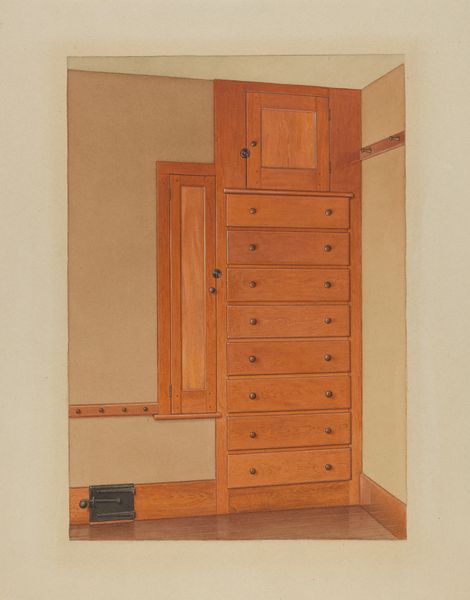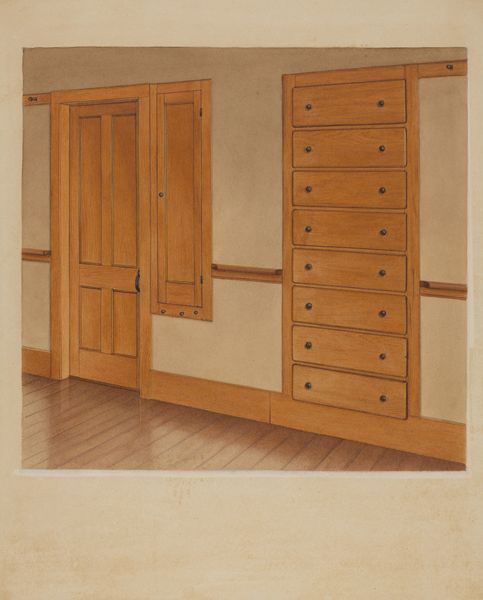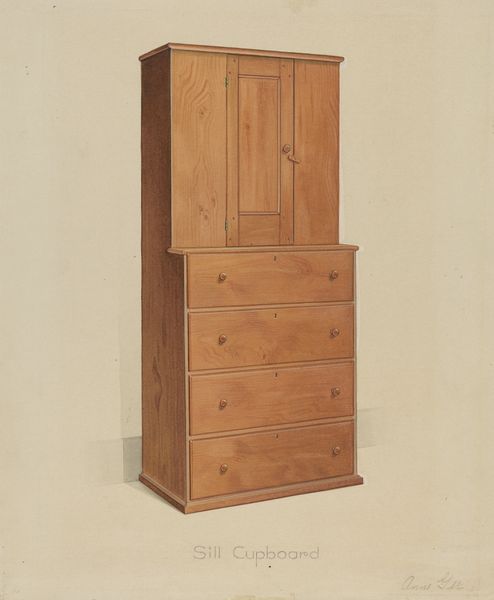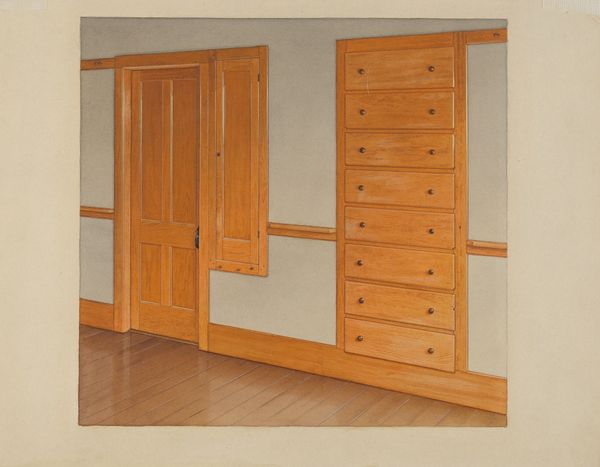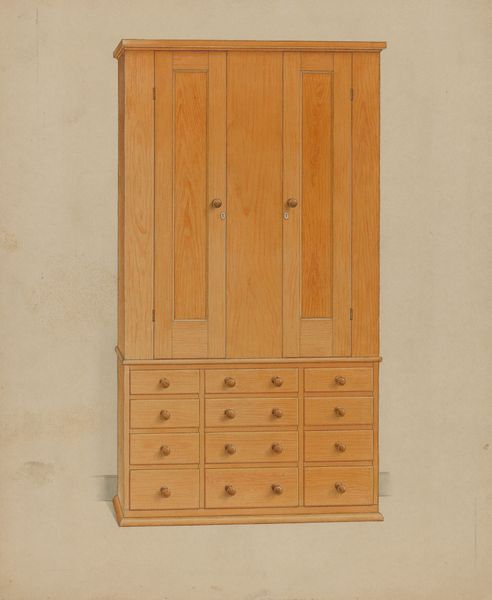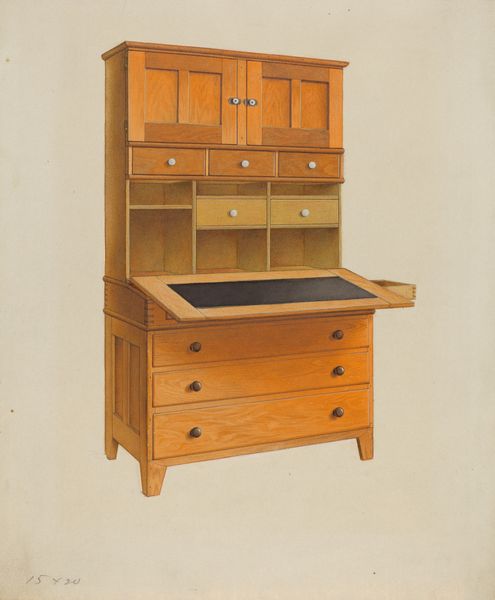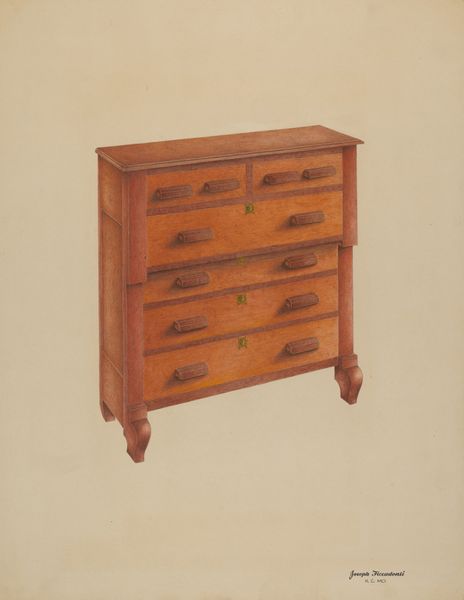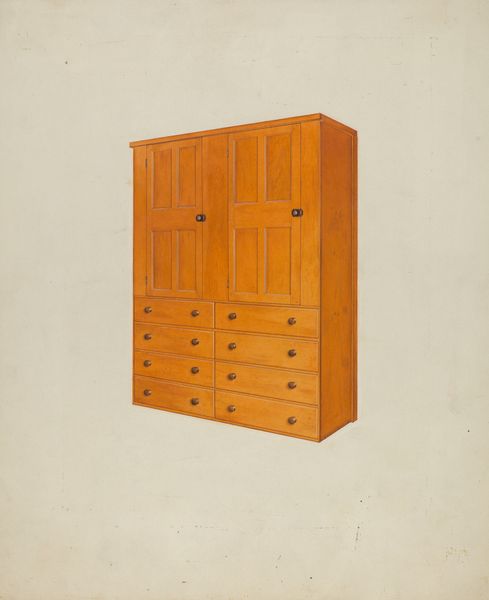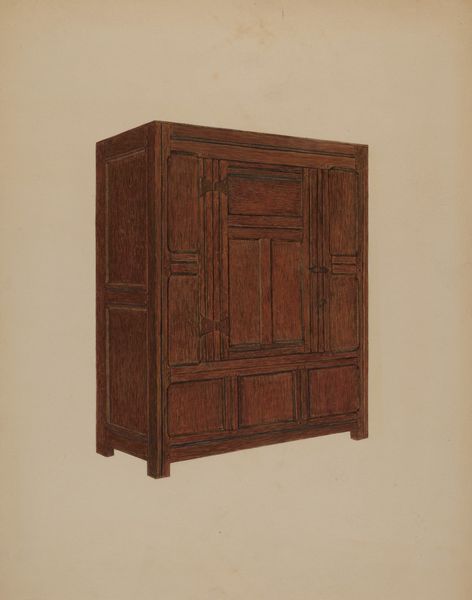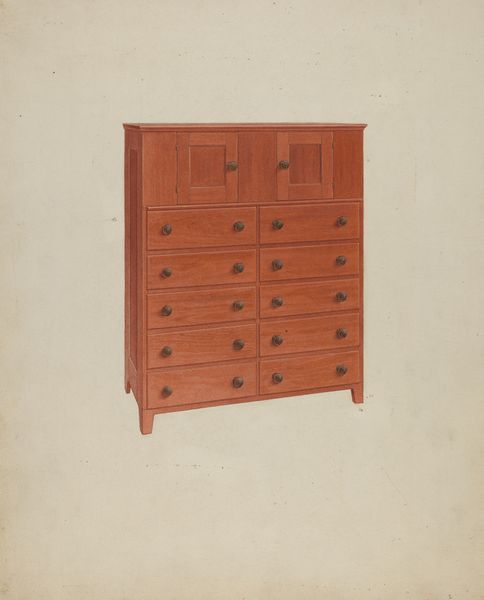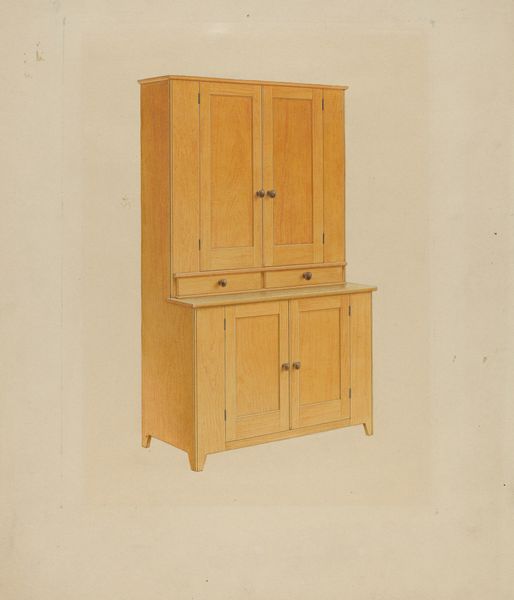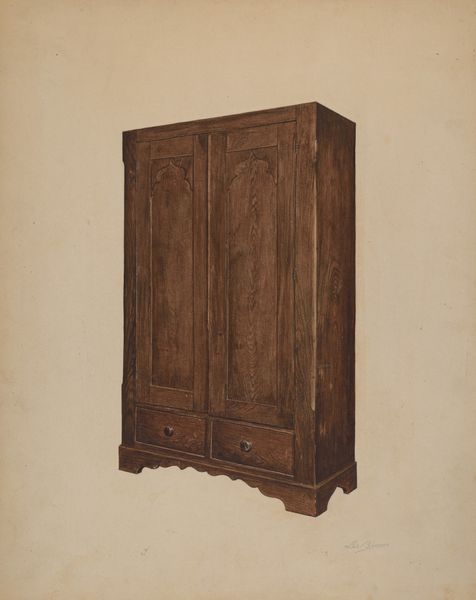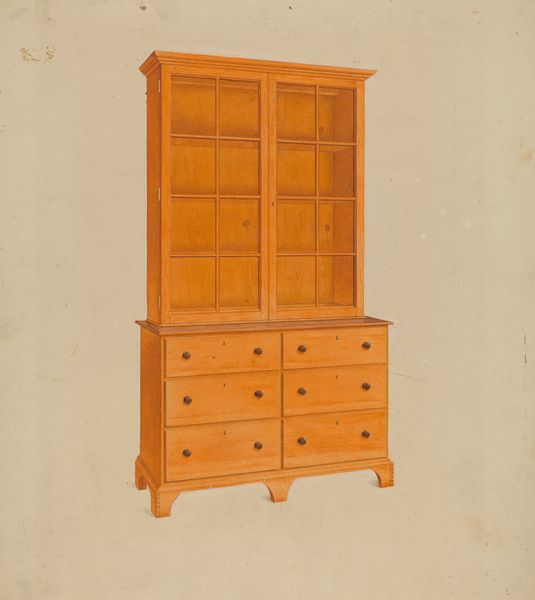
drawing, watercolor
#
drawing
#
watercolor
#
watercolor
#
realism
Dimensions: overall: 27.9 x 21 cm (11 x 8 1/4 in.)
Copyright: National Gallery of Art: CC0 1.0
Editor: This is Alfred H. Smith's "Built-in Cupboard and Drawers," a watercolor from around 1937. It's a pretty straightforward depiction, but I'm struck by the almost perfect geometric forms of the cupboard and the surrounding architectural space. How do you interpret this work? Curator: The charm of this piece lies precisely in the artist's treatment of form. Observe the way Smith has emphasized the rectilinear nature of the drawers and the door, creating a very precise grid-like composition. Note too, the subtly modulated planes of colour that define the walls and cupboard. Do you see how the differing light emphasizes the painting’s architectural depth? Editor: Yes, the variations in tone, especially on the wall behind the cupboard, create a sense of depth and volume. And the drawer knobs punctuate the grid, creating visual rhythm. Curator: Precisely. Now consider how the composition invites the viewer's eye to move from the top of the cupboard, downwards, following the receding planes. Smith uses the interplay of lines and subtly shifting hues to build a self-contained visual language, independent of any narrative function. It directs the eye, don't you think? Editor: I do, it's as if the formal elements become the subject matter themselves, overshadowing the functionality of the cupboard. What does the lack of anecdotal details suggest about the intention of the artist? Curator: Perhaps Smith aimed to reduce architecture to pure form, exploring line, plane, and colour without sentimental gesture. Notice also that while he has achieved high degree of realism, there’s an economy to the watercolour’s line-work. He leaves out so much detail. Editor: I see it now! I initially missed the level of consideration that the artist dedicated to structuring such simple forms and their organization within a tight composition. Thank you! Curator: Indeed. By limiting our scope of analysis to form, composition, and chromatic variation, we've seen how the artist created an intimate and refined study of architectural elements.
Comments
No comments
Be the first to comment and join the conversation on the ultimate creative platform.
